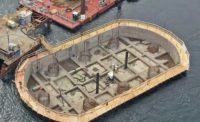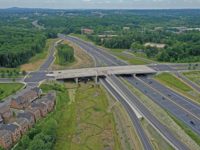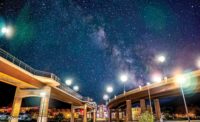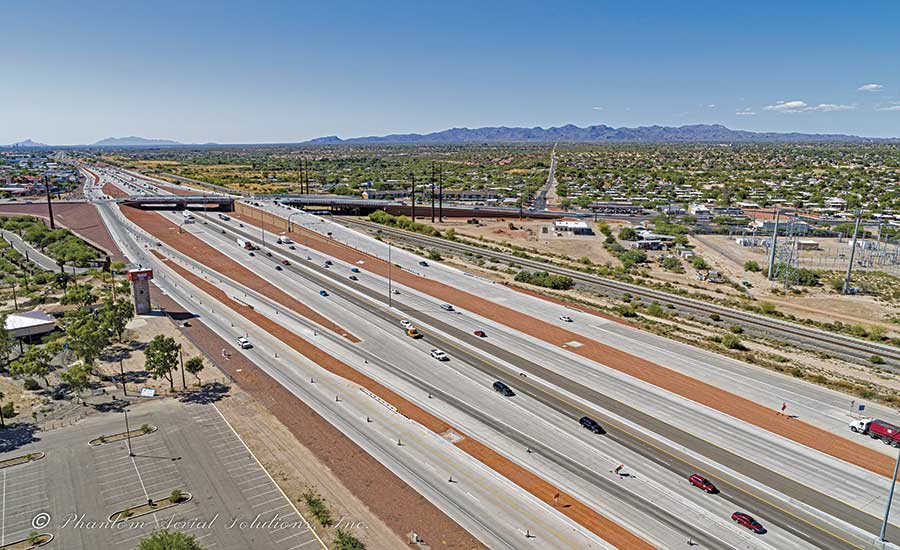ENR Southwest's 2020 Best Projects
Best Highway/Bridge, Excellence in Safety, Award of Merit; I-10, Ina Road Traffic Interchange

I-10, Ina Road Traffic Interchange
PHOTO COURTESY SUNDT CONSTRUCTION

I-10, Ina Road Traffic Interchange
PHOTO COURTESY SUNDT CONSTRUCTION

I-10, Ina Road Traffic Interchange
PHOTO BY PHANTOM AERIAL STUDIOS INC.



I-10, Ina Road Traffic Interchange
Tucson
Best Projects and Excellence in Safety, Award of Merit
Owner: Arizona Dept. of Transportation/Town of Marana
Lead Design Firm: Psomas
General Contractor: Sundt/Kiewit, a Joint Venture
Structural Engineer: Kimley-Horn; Premier Engineering
Landscape Architect: Wheat Design Group
Subsurface Utility Engineer: Gannett Fleming
MSE Wall Design: Point Engineers
Before the renovations, Ina Road crossed at-grade railroad tracks and then crossed under I-10, which created traffic delays during peak travel periods, primarily due to the busy railway. The Arizona Dept. of Transportation project constructed bridges that lifted Ina Road above the tracks and I-10, thus eliminating delays in Marana when trains pass through. The project also widened I-10 within 0.6 mile north and south of the interchange.
The town of Marana then converted portions of Ina Road from two lanes to a four-lane divided roadway. Work also replaced the Santa Cruz River Bridge due to scour concerns that often closed it during flooding. The replacement bridges each carry two lanes of traffic.
Additional project components included mechanically stabilized earth walls, drainage improvements, landscaping, soil cement bank protection and utility relocations. New paved trails along both sides of a nearby river connect to a system of parks and regional bicycle routes.
During construction, temperatures climbed beyond 110 °F, with bridge deck temperatures surpassing 140 °F. Field managers implemented a buddy system to ensure that crew members checked each other for symptoms of heat stress. Crews also were equipped with heat-illness prevention kits. Summer work hours began at 3 a.m. to avoid the intense heat later in the day. Workers also had access to shaded break areas.
In addition to taking heat precautions, the team also enlisted the help of vendors and specialty firms to host demonstrations of proper fall protection measures, trench safety and first aid lessons. During national Safety Week, the contractor held live rigging demonstrations for fall protection, emergency action plans, equipment operating zones and trench safety, among other topics.






